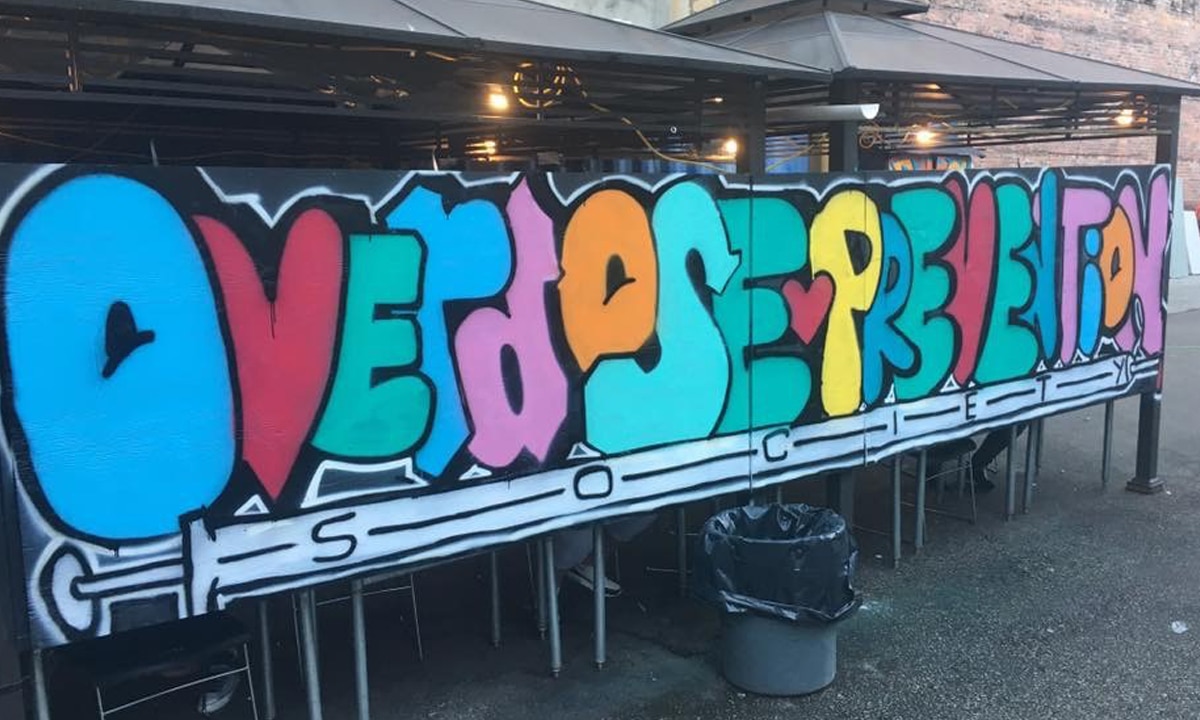Il faut reconnaître que 2020 a été un désastre. Il est possible d’exprimer le nombre de victimes en chiffres, mais on ne peut pas calculer l’impact et les dommages actuels. Amis, membres de la famille, partenaires et collègues ont perdu leurs vies, un grand nombre d’entre eux seuls, et la plupart, à cause des politiques sur les drogues échouées.
Nous sommes bien conscients des difficultés rencontrées au cours de l’année passée. Toutefois, il faut reconnaître les actes de courage, d’ingéniosité et de détermination qui ont contribué à faire évoluer la situation en matière de santé publique, de réduction des méfaits et de politique sur les drogues. Avec la pandémie de la COVID-19, le grand public a pu voir et comprendre les inégalités sanitaires profondes qui affectent la société canadienne. Ainsi, le discours public et la conscience du public se sont ouverts aux questions qui concernent la consommation supervisée, la décriminalisation des drogues et un approvisionnement sûr— comme ils ne l’avaient jamais fait auparavant.

En 2020, le nombre de surdoses a continué à augmenter, mais la pandémie de la COVID-19 a également privé les Canadiens de leurs soutiens réguliers. Elle a peut-être finalement permis à certaines personnes de trouver un abri, mais le risque de surdose a aussi augmenté, puisque ces personnes vivaient désormais seules.
En 2021, il y a beaucoup de travail à faire. Il y a encore des drogues toxiques dans le marché illégal. La stigmatisation et la discrimination repoussent encore les gens à l’ombre. Les gouvernements municipaux et provinciaux continuent de rejeter toute évidence de la réduction des méfaits et de ses effets positifs. De plus, il faut encore faire changer d’avis nos dirigeants élus et les convaincre de soutenir une politique progressiste sur les drogues.
En 2021, la Coalition canadienne des politiques sur les drogues se concentrera sur la décriminalisation et la réglementation légale des drogues afin de mettre fin aux méfaits du marché des drogues toxiques. Pour y parvenir, nous mènerons une série de grands projets, chacun ayant son propre public et son propre objectif, afin de pousser le Canada vers un avenir sans méfait lié à la politique sur les drogues.

Au premier plan de nos efforts se trouve le projet Aller de l’avant : mettre fin à la crise des surdoses. Ce projet national de dialogues sur la santé publique vise à aider les Canadiens à comprendre que nous poursuivons tous les mêmes objectifs : une société en sécurité et sans danger, ne souffrant pas des méfaits d’un approvisionnement toxique de drogues. À travers le Canada, ce projet permettra de rassembler les dirigeants des communautés afin de définir des valeurs et des objectifs communs, ainsi qu’une vision partagée du changement, permettant ainsi aux Canadiens de travailler ensemble à la recherche de solutions. Aller de l’avant vise à rapprocher les communautés et à établir ainsi une base solide de soutien public ce qui permettra de stimuler nos autres initiatives et efforts majeurs.
Le projet Broken Drug Policies est un projet similaire en Colombie-Britannique, qui vise à accélérer la réforme des politiques sur les drogues en s’appuyant sur les progrès déjà réalisés au niveau provincial. Broken Drug Policies aidera le public à comprendre comment les systèmes interconnectés (de soins de santé, de justice pénale, de services sociaux et d’emploi) affectent la consommation de substances. Ce projet soulignera également que les citoyens ont le pouvoir d’influencer ces systèmes afin de créer des changements.
Le Projet D’encadrement Actualisé examinera en profondeur comment un système légal de réglementation des drogues pourrait fonctionner. Seule un approvisionnement sûr et réglementé de drogues permettra de mettre fin à cette épidémie de décès par surdose, mais la première étape essentielle pour y parvenir est d’envisager un tel avenir. Dans le cadre de ce projet, la CCPD consultera les parties clés, notamment les consommateurs de drogues, afin de déterminer les facteurs qui contribueraient au succès d’un système légal de réglementation. Comment les gens auraient-ils accès à des drogues plus sécuritaires? Qui pourrait les obtenir? Quand et où pourraient-ils les obtenir? Tous ces points seront examinés afin de définir les grandes lignes d’un changement qui pourrait sauver des vies.

Imagine Safe Supply se joint à cet effort afin de définir le concept de l’approvisionnement sûr, mais aussi de préciser ce que cela signifie pour les personnes les plus directement touchées par les méfaits de notre politique actuelle sur les drogues : les consommateurs de drogues. Il est indispensable de comprendre en profondeur ce concept pour mettre en place une politique transformatrice.
Avec le déploiement des vaccins de la COVID-19, on est ravi de démarrer la planification de Stimulus 2022 : Drogues, politiques et pratiques au Canada. Cette conférence sur la réduction des méfaits est la plus grande du pays. Elle réunira des spécialistes de la réduction des méfaits, des personnes qui consomment des drogues, des responsables gouvernementaux, des leaders communautaires, des défenseurs et des universitaires et leur permettra de partager leurs connaissances ainsi que de renforcer la communauté pour mieux répondre à la crise des surdoses la plus grave de l’histoire du Canada.
En regardant vers 2021 avec espoir, il faut être unis, aujourd’hui plus que jamais, alors que nous progressons sur cette voie qui nous permettra de changer les politiques sur les drogues échouées et de sauver des vies. C’est pourquoi nous vous demandons de nous soutenir.


























